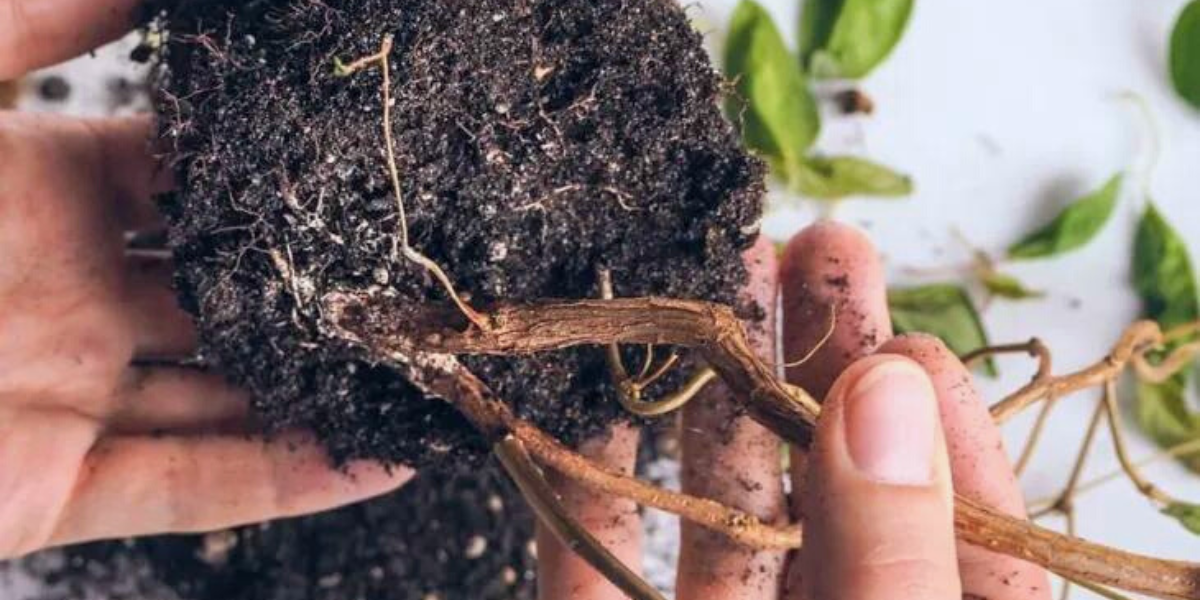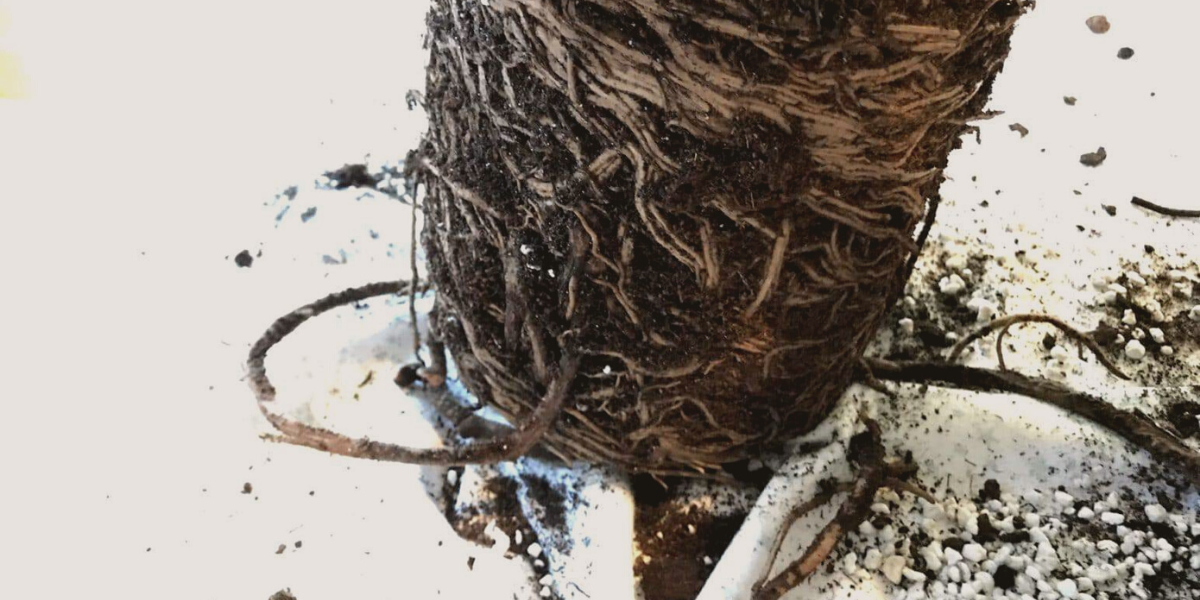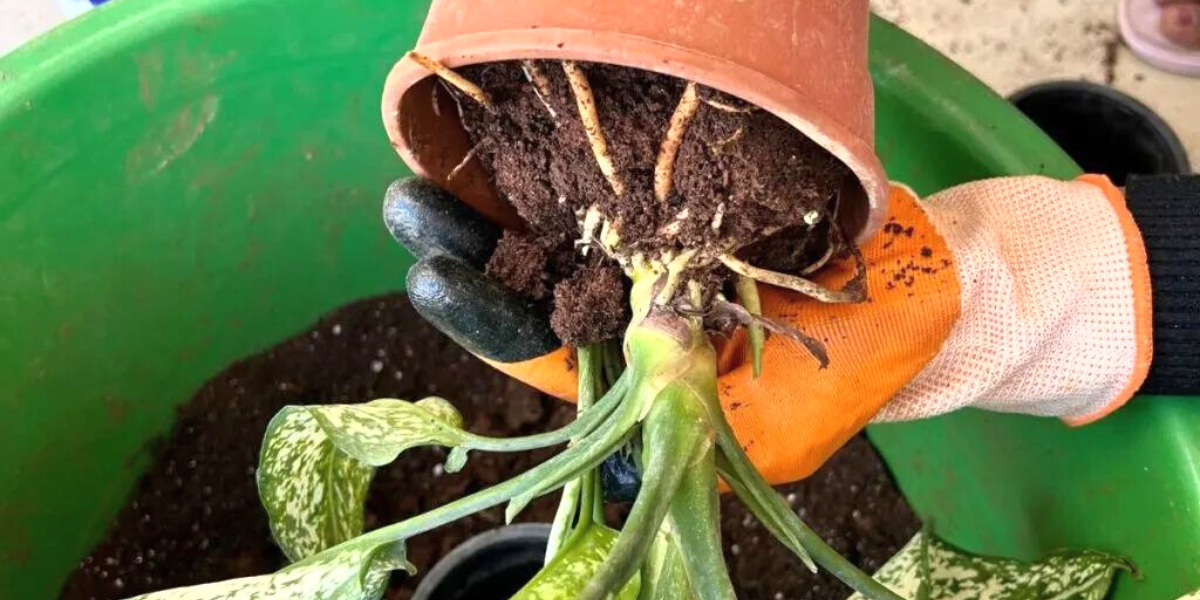The genus Aglaonema (more often simply called Chinese Evergreen) contains about 50 different types of plants. These are herbaceous evergreen flowers native to the tropical and monsoon regions of India, China, Southeast Asia, and New Guinea. Young plants have practically no noticeable stems; over time, it takes shape but remains low, without branches. The leaves are elongated, dense, and smooth to the touch, and the color may vary depending on the species. With proper care, they can bloom and bear fruit.
Since the homeland of Chinese Evergreen is a region with a warm and humid climate, the flower is used to constant moisture. It requires not only proper watering but also regular spraying. Although it is quite resistant to overwatering, it is still important to maintain a balance to prevent the appearance of diseases due to excess moisture. The most common effect of improperly organized irrigation is the appearance of Chinese Evergreen root rot. What kind of disease is this, what are its causes and consequences, and how to cure a flower from it, read below.
Aglaonema Root Rot Description
A disease called root rot can affect various plants, both adult and young shoots. Although Chinese Evergreen is particularly susceptible to it, growers, especially beginners, may have difficulty maintaining the right moisture balance. The name of this disease speaks for itself. Due to improper watering, the Chinese Evergreen roots begin to rot. It is because the soil becomes too dense and interferes with airflow to the roots. Rotting processes can also be caused by fungi that enter the ground from other flowers.
Chinese Evergreen root rot occurs when:
- you water the flower too often or too much;
- in the room where the pot stands, the temperature is too low;
- you have organized the drainage system incorrectly;
- you have transferred the fungus from another damaged plant.

The root rot quickly affects the entire root system, interfering with the normal development of the Aglaonema’s upper part. The main difficulty in its classification and identification lies in the fact that all processes take place underground. Only when the rot affects a significant part of the roots can you notice some symptoms on the leaves.
At the same time, if you do not organize the correct drainage system, moisture stagnates in a pot, becoming an excellent breeding ground for bacteria and microorganisms. It greatly aggravates the situation, increasing the likelihood that it will not be possible to save the plant. Moreover, if it progresses, it can spread to healthy nearby flowers. That is why early detection of the problem is essential for the Chinese Evergreen’s and your other plants’ health.
The rotting of the root system gradually rises higher, and mature plants may even get Chinese Evergreen stem rot. It is a signal that the disease has passed into an advanced stage. The trunk near the ground begins to darken and becomes thin. After a while, it can even get covered with smelly mucus and break. But even a flower in this state can be saved if you act correctly, as experienced gardeners recommend. Fortunately, if you are attentive enough to your flowers, you will be able to notice painful changes in them on time and begin treatment to prevent the complete death of Chinese Evergreen.
Aglaonema Root Rot Symptoms and Diagnosis
Root rot looks exactly as you might imagine. Due to lack of oxygen and moisture stagnation, the Chinese Evergreen lower part becomes:
- fragile, parts are easily separated from each other;
- doughy and soft;
- slippery to the touch;
- acquires a dark color;
- exudes an unpleasant smell.
Since the Chinese Evergreen root rotting processes occur underground, you can only see all this when taking the flower out of the pot. However, due to the development of root rot, the plant does not get the right amount of nutrients, and it affects the Aglaonema’s upper part. The growth of the plant and the appearance of new leaves slow down; in especially severe cases, they stop completely. Leaf blades turn yellow, and the lower part of the trunk becomes thinner. By the way, the fact that the leaves turn yellow makes owners think that Chinese Evergreen needs more moisture. They begin to water the plant even more abundantly, which, of course, only makes the situation worse and can provoke the development of other plant diseases.

If you notice some of the symptoms described above, be sure to check the condition of the roots. It is necessary to remove the plant from the pot and lightly shake it off the ground. You will notice rotten roots immediately, as you will feel an unpleasant smell. Some gardeners are hesitant to pull out Chinese Evergreen for fear of damaging the roots. However, it is essential to do it to identify the problem. If the plant is healthy, it will bounce back fairly quickly. Some experienced growers even recommend manually spreading the root system to loosen it a little when moving the flower into a larger pot. So Chinese Evergreen feels more comfortable.
Note: The juice released when the leaves are broken and the fruits are moderately toxic to humans. Therefore, when working with this plant, take precautions: wear gloves and wash your hands thoroughly. The flower pot is best kept away from pets and children.
Since other Chinese Evergreen diseases can accompany root rot, all possible variants should be explored. If your knowledge and experience are not enough, or you would like to turn to expert opinion to confirm your guesses, use our application:
- Place the plant so that all its parts are clearly visible. Of course, Aglaonema should be taken out of the pot before it.
- Photograph the whole flower and then the damaged roots and leaves to get a comprehensive picture of its condition. Try to remove as much soil as possible from the bottom. If you have images in the gallery, you can upload them.
- The application analyzes the uploaded pictures and suggests several diseases. The most likely option is displayed at the top of the list. Based on this analysis, you can choose the appropriate treatment. You may need to treat several diseases and pests at once.
Timely detection of root rot guarantees that you will have time to save the plant and prevent the transmission of Chinese Evergreen root rot to neighboring flowers. If you are a beginner gardener and have little experience with Aglaonema, be sure to use the app to pinpoint any problems as accurately as possible.
Chinese Evergreen Root Rot Treatment Methods
Since overwatering is the main cause of root rot, you need to stop watering temporarily. The soil in which Aglaonema grows is recommended to be moistened only when the top layer dries to a depth of about an inch. Move the pot with the affected plant to a warmer room or raise the temperature. This flower is most comfortable at 70-75°F. At the same time, try to find a place where there will be absolutely no drafts. They are extremely detrimental to any variety of Chinese Evergreen. With a small degree of damage to the roots, such a natural treatment will be enough to restore the plant’s health.
If the situation is more neglected, it is worth moving on to more severe measures:
- Remove the flower from the pot and shake the soil off the root system. It’s okay if dead roots fall off along with clods of ground.
- Rinse the plant thoroughly under tap water to remove any remaining soil and rotten parts.
- Disinfect your knife, scissors, or garden pruner and cut off any damaged or unhealthy-looking roots. Do not be afraid to cut off the excess, as it is safer than leaving the rotted parts and causing a relapse.
- If the degree of damage is quite large, you will also have to get rid of some of the leaves. Thus, the roots will need less strength to supply the flower with useful elements, and they can recover faster.
- To stop the disease cycle, disinfect the remaining parts of Chinese Evergreen. You can use a ready-made fungicide from the store for it or make a weak solution of potassium permanganate.
After processing the roots, you can start replanting Chinese Evergreen. If you plan to use an old pot, wash it thoroughly and decontaminate it with a fungicide solution or at least with bleach. When choosing a new container, pay attention to its shape and size. It is better to select shallow pots since the root system of this plant does not go very deep. If you can’t find a low container, put a drainage layer in the existing pot, which will take up about a third of the total volume. It will reduce the soil thickness and allow moisture to drain freely into the tray.

While soil is not recommended to be reused, unless you have no other option, you should sanitize it too to get rid of Chinese Evergreen root rot remains. It can be done by heating it in the oven, freezing it, steaming it, or using fungicide. Since Aglaonema is quite picky about the soil, you need to find the right ground mix. It should pass moisture and air well and be lightweight and not compressed. In the ready-made products, you will find sand, charcoal, humus, peat, etc. It is extremely important to provide good drainage. For it, you can use expanded clay, any nutshells, small pebbles, broken bricks, and much more.
At the same time, Chinese Evergreen feels very good in hydroponics. This way, you have faster access to the roots to control the recovery process. So if you have the opportunity to use such a method, try it. If you grow several flowers in this way, the main thing is to prevent the root rot reappearance, as it can provoke a large-scale epidemic.
After repotting Aglaonema healed from Chinese Evergreen root rot, the correct watering regime and the appropriate temperature and humidity of the room should be organized. The latter is especially important because this flower is used to tropical climates. If the air is too dry, the top of the plant will dry out, and the leaves will curl up. To prevent it, spray the crown regularly. To increase the overall humidity level, you can organize the following system: take a deep tray or dish, fill it with pebbles, pour some water on the bottom, and put a flower pot there. The liquid evaporates and provides ideal conditions. The main thing is that the Chinese Evergreen’s roots do not reach the water from the container.
Reduce watering and spray gently during colder months to prevent root rot from reappearing. Repeat watering a couple of days after the topsoil layer dries out. Room temperatures as low as 60°F are allowed, but sudden changes should be avoided. Also, take care to protect the flower from cold drafts.
Aglaonema likes not only warm but also well-lit rooms. Under natural conditions, it grows under tall trees, so it is usually found in the shade of their crowns. You need to provide bright diffused light, but avoid direct sunlight as it can cause severe leaf scorch. If you have a Chinese Evergreen variety with a colorful leaf pattern (like Siam Aurora or Pink Dalmatian), the plant is best kept in more lighted rooms. In the shade, the pattern may become paler.
Aglaonema refers to those flowers that like various fertilizers. During the warmer months (approximately March to August), when the growing season is active, apply an ornamental plant food every two weeks. It is better not to use them to give the flower time to prepare for the winter and rest in the remaining months. Alternate organic and mineral fertilizers to improve the health of Chinese Evergreen and avoid root rotting.
Although Aglaonema is not a very demanding plant, it still requires some care and attention from its owner. Always remember that it comes from warm regions with high levels of humidity, and therefore you need to provide similar conditions. At the same time, to prevent the occurrence of Chinese Evergreen root rot, a competent watering regime and a high-quality irrigation system should be organized. Crown spraying, soil wetting, and fertilization should be adapted to the current season and ambient temperature. Follow our simple tips to keep your beautiful Chinese Evergreen healthy.
Leave a Reply
You must be logged in to post a comment.